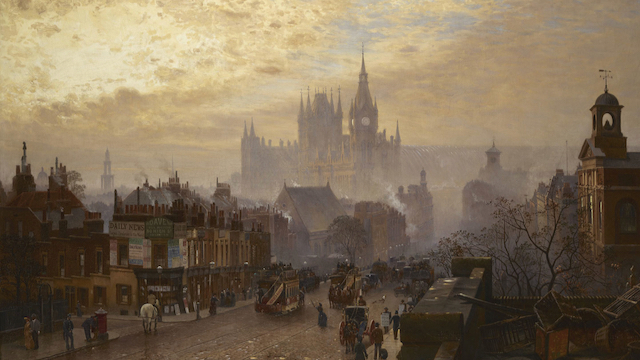Jody was a good friend, again one I never met, but we exchanged e-mails and grew to be friends. I was a long-distance member of his society, Friends of the Soldier Named Murray. The group had the distinction of being the only active Scion in a Retirement Home recognized by Wiggins of the Baker Street Irregulars. When Jody and his wife decided it was time to move to a facility where his wife and he had the care they needed , they brought their love of All Things Sherlock with them. Their society was a hit with other residents and members all over the world with whom he had communicated. Their monthly meetings and their gazette, The Alpha Gazette, were lively and entertaining and full of a love of his passionate desire of the World of 1895. This is one article of many he and I exchanged. He informed me I could pass them along to keep the word of the Master forever Green.
THE FLAT AT 221B
The pleasure of seeing a mystery unveiled or a puzzle revealed might be the major attraction of the canonical tales. But these are found in most mystery stories that follow the plot formula of Poe. As we search for the distinguishing characteristic of the Holmes tales, perhaps, we might look at the “snuggery” factor If there ever was a cozy retreat, it was 221B Baker Street.
Though large enough to be “airy,” the flat was a self-contained unit where every necessity and every comfort were on hand for Holmes and Watson. Mrs. Hudson was always there to send up “beef, bread and beer” for the sideboard, or a hearty breakfast in the mornings, tea in the afternoons and other repast as needed, at any time. (How fortunate this fraternity of two to have Mrs. Hudson for a housemother.)
The tantalus, we know, was endowed with an endless supply of whisky. The nearby gasogene was never once known to run out of gas. Tobacco in the Persian slipper and cigars in the coal scuttle were there for the satisfaction of smokers. There was no shortage here of chemical contentment.
Resources to be consulted were always within reach. No need to go out on a stormy night to review records at the public library or the CID files at the Yard. Everything was right here. There were commonplace books for data, the agony columns, notes on old cases and techniques of past investigations and a supply of name directories for all manner of identifications. With everything on hand, Holmes rarely had to leave the fireside to research his cases.
Then, too, there was the warmth of the hearth fire to which our characters were drawn for their camaraderie and conversations. Nothing could be more comfortable than to walk from the blazing coal grate over to the nearby bow window and gaze out into the winter night. (Giant snowflakes float from a dark sky and land on wet cobblestones glistening with the reflected light of gas lamps.)
As an element of security, 221B was a second floor flat which commanded a full view of both the street below and the front door to the residence. Inside, the sound from the treads of 17 steps told Holmes much about a visitor even before the knock at the sitting room door, giving him the advantage over all who called upon him. By the strength of his personality, the clarity of his perception and his innate mental superiority, Holmes could dominate anyone who ventured to enter this sanctum sanctorum. (The mother-bird protects the nest by exercising control over it.)
Finally and most important, there was the fast, warm, manly friendship between two individuals, each of whom could accept the shortcomings of the other and appreciate the strengths of the other. Their personalities, though different, were complementary and not conflictive. Each was supremely confident of his own abilities in his own field. Holmes had his crimes to solve, and Watson had his romances (with the women of many nations on three continents) to pursue. Neither suffered from the insecurity which sometimes forces men to compete where competition serves no useful purpose.
These are a few of the factors of the friendship and of the snuggery in which that friendship prospered. In looking for the attraction of the Holmes tales, these should not be overlooked.
Josiah “Jody” Baker
FRIENDS OF THE SOLDIER NAMED MURRAY,
A Sherlock Holmes Society,
at The Terrace On Mountain Creek
SCION of the BAKER STREET IRREGULARS
.





 For generations of Sherlockian devotees around the world, Basil Rathbone was known as Sherlock Holmes. He portrayed the detective in two movies produced by Twentieth Century Fox and set in the Victorian era:
For generations of Sherlockian devotees around the world, Basil Rathbone was known as Sherlock Holmes. He portrayed the detective in two movies produced by Twentieth Century Fox and set in the Victorian era:  Rathbone and his Watson from both films, Nigel Bruce, went on to feature in twelve films produced by Universal Studios that brought the characters forward in time to fight Nazis during World War II, among other adventures. With those films, fans of a generation learned of Sherlock Holmes. The films have morphed into a television event that can still be seen today. Thank Goodness for the chance to watch and re-watch these films.
Rathbone and his Watson from both films, Nigel Bruce, went on to feature in twelve films produced by Universal Studios that brought the characters forward in time to fight Nazis during World War II, among other adventures. With those films, fans of a generation learned of Sherlock Holmes. The films have morphed into a television event that can still be seen today. Thank Goodness for the chance to watch and re-watch these films.












